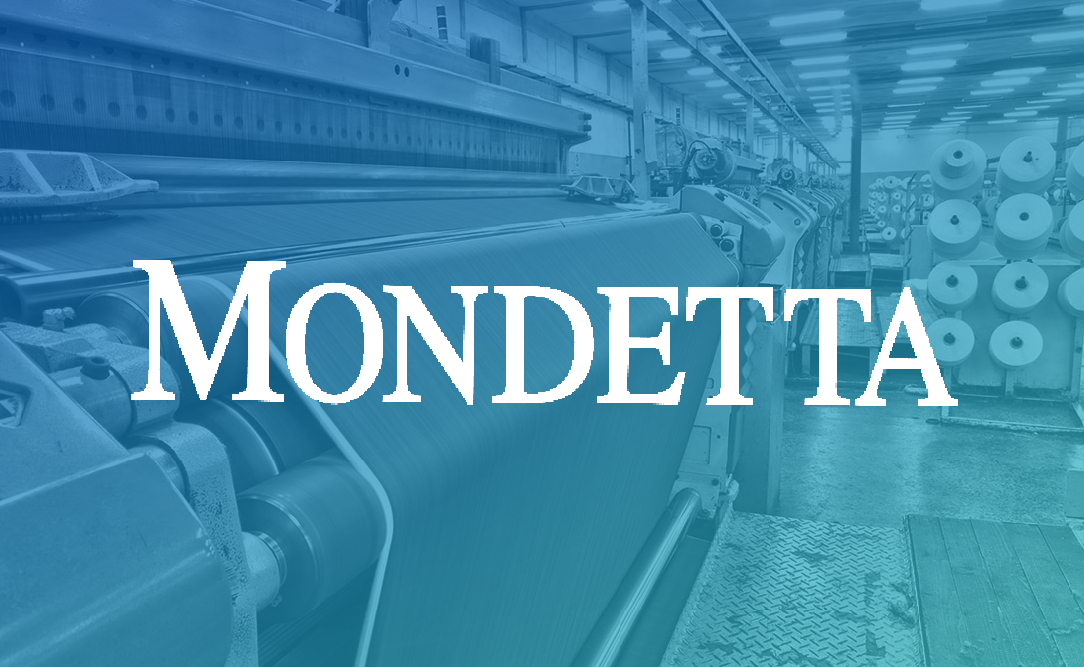What is Managed File Transfer? (MFT)

- What is managed file transfer?
- How does managed file transfer work?
- Benefits of managed file transfer
- Functions of managed file transfer
- Managed file transfer FAQs
- Take the next step toward faster MFT
Security is paramount. By 2025, Gartner estimates that “45% of organizations worldwide will have experienced attacks on their software supply chains, a three-fold increase from 2021.” With the risk of data breaches rising, security is more important to businesses moving ever-increasing amounts of data.
MFT provides a preemptive security strategy that includes real-time monitoring and validation of security policies, as well as measures to secure data in transit or storage.
What is managed file transfer?
Managed File Transfer, or MFT is a solution that encrypts, automates, and centralizes data exchanges between different organizations, whether inside or outside a company's network. It essentially enables businesses to safely and reliably share and receive files of any size with partners, vendors, and customers.
Typical managed file transfer solutions encompass the sending of files, as well as being able to manage the data movement process from a centralized portal/platform, while also ensuring security, reliability, and compliance with regulations and trading partners.
Compared to traditional methods like file transfer protocol (FTP), hypertext transfer protocol (HTTP), and secure file transfer protocol (SFTP), MFT stands out as a superior choice, offering more advanced security, reliability, and efficiency in data transfer.
MFT solves many problems that come with older systems, like FTP, which can include data security risks, difficulties recovering from errors, and high fees for poor performance.
MFT facilitates secure data movement through various integration patterns:
- System-to-System file transfer: Systems integration ensures synchronization among internal systems.
- Multi-enterprise file transfer: Enterprise integration connects various business parts and external partners securely.
- Large file transfer: Efficient handling of big files for backups and data sharing.
- Ad hoc file transfer: Enables spontaneous file sharing among stakeholders.
In the future, MFT will keep evolving to help businesses grow, become more flexible, and stay reliable. It will adapt to new technologies and needs, making data exchange even smoother in our increasingly connected digital world.

Invoicing Processor Efficiently Transfers Millions of Monthly Files
Transmitting more than 6 million files a month using AS2, SSH FTP, and FTPS transfer protocols, Tungsten Network chooses Cleo for file transfer needs.
How Does Managed File Transfer Work?
- Secure Transfer: MFT uses encryption to protect files during transit, making sure only authorized parties can access them. It's like sending files in a locked safe, keeping them safe from prying eyes.
- Automation: MFT can automate the transfer process, scheduling transfers to happen at specific times or in response to certain events. This saves time and reduces the risk of errors compared to manual transfers.
- Tracking and Monitoring: MFT provides detailed logs and reports, so you can track the status of file transfers and identify any issues quickly. It's like having a tracking number for every file, so you always know where it is.
- Integration: MFT can integrate with other systems and workflows, streamlining processes and improving efficiency. For example, it can automatically transfer files between different business applications without manual intervention.
→ See the Future of Managed File Transfer
Benefits of Managed File Transfer
Every day, businesses depend on exchanging electronic file data. In the absence of MFT software, unstructured data, including reports, contracts, project data, as well as customer and employee information, is vulnerable to manipulation and loss. Ensuring the smooth transfer of files between internal systems and external partners, securely and with an audit trail, is imperative for the success of any organization.
Many factors are driving companies to shift to MFT:
Efficient Data Management: In today's digital landscape, the smooth exchange of electronic data is paramount for business operations. Managed File Transfer (MFT) solution ensures the secure and auditable movement of unstructured data, including critical documents, reports, contracts, and sensitive customer information. Without MFT, companies risk data manipulation and loss.
- Enhanced Data Security
According to a 2023 study, the average cost of a data breach was $4.45 million, the highest figure on record (IBM). MFT offers preemptive security strategies, providing real-time monitoring, validation, and control mechanisms to safeguard data both in transit and at rest. By implementing MFT, companies can mitigate the financial and reputational risks associated with data breaches and failed transfers.
- Scalability for Data Growth
As data volumes and file sizes continue to expand, businesses require scalable solutions to manage the increasing complexity of data movement. MFT provides automated governance, ensuring reliable and efficient file transfers across diverse endpoints, devices, and global distances. This scalability enables organizations to handle large volumes of data seamlessly and accelerate big data movements worldwide.
- Regulatory Compliance
Compliance with legislative and industry standards is non-negotiable for businesses. MFT systems, properly configured, enable organizations to meet stringent data security requirements mandated by regulations such as PCI DSS, HIPAA, SOX, and others. By encrypting, transmitting, monitoring, and storing sensitive data securely, MFT empowers organizations to achieve compliance with regulatory mandates effectively.
- Adaptability to Technology Trends
The evolving technological landscape introduces complexities in data transfer processes. MFT addresses these challenges by offering advanced capabilities and support for emerging technologies such as big data, cloud applications, artificial intelligence, data analytics, and IoT. MFT solutions are adaptable to various platforms, mobile devices, and existing IT infrastructure, ensuring seamless integration and efficient data exchange.
- Operational Visibility
Proactive issue resolution is essential for minimizing operational risks and maintaining service level commitments. MFT provides operational visibility over file movements, enabling organizations to anticipate and address issues promptly, such as failed transfers. By enhancing visibility, MFT helps organizations improve operational efficiency and compliance with SLA commitments.
Searching for the right MFT Solution for your organization?
Here are the most important questions you should be asking your MFT provider
Functions of Managed File Transfer
Security
Implement robust encryption for both internal and external transfers to safeguard sensitive data, whether it's in transit or at rest. Enhanced security features like session breaks and protocol inspection provide multi-layer protection, ensuring the integrity and confidentiality of enterprise data.
Streamlined File Transfer
Enable seamless and efficient data exchange across diverse file transfer activities to meet the dynamic needs of enterprise operations. Support for a wide range of file types, including multimedia, PDFs, emails, XML, and EDI, facilitates smooth collaboration and information sharing within the enterprise ecosystem.
Comprehensive Visibility
Empower enterprise stakeholders with real-time, 360-degree visibility into file transfer activities. Gain insights into file transfers, including sender and receiver information, content shared, and transfer volume, enabling proactive identification of potential issues and bottlenecks before they disrupt critical business processes.
Compliance Assurance
Address stringent regulatory requirements by incorporating strong encryption mechanisms and detailed audit trails into the managed file transfer solution. Ensure compliance with industry standards such as GDPR, HIPAA, PCI DSS, and others, mitigating the risk of compliance failures and associated financial penalties for enterprises.

Multistate tax agency securely shares audit files too large for email
“If files were too large to be sent by email, we would burn an encrypted DVD and send it via USPS, UPS, or FedEx. If it was time sensitive, we would break the file into pieces and send it via our secure mail system. None of it was ideal.” - Chris Lane, Network Administrator
Common Managed File Transfer FAQs
How will an MFT solution improve my current file transfer process?
An MFT solution automates and streamlines file transfers, eliminating manual processes and reducing errors. It also enhances security with features like encryption and user access control, and provides audit trails for compliance and tracking.
Can an MFT solution integrate with my existing systems?
Most MFT solutions offer integration capabilities through APIs or pre-built connectors. This allows them to seamlessly connect with various business applications like ERP, CRM, and databases for automated data exchange.
What types of security features does your MFT solution offer?
Look for features like encryption in transit and at rest, user authentication with strong password policies, access control lists, and audit trails to ensure data security and compliance with relevant regulations.
Does an MFT solution support the file transfer protocols I need?
Common file transfer protocols include FTP, SFTP, FTPS, AS2, and HTTPS. Ensure the MFT solution supports the secure protocols used by your trading partners and internal applications for seamless data exchange.
What is the typical cost and deployment time of an MFT solution?
MFT solutions can be cloud-based, on-premise, or hybrid, impacting the cost structure. Deployment time depends on the complexity of your infrastructure and the chosen deployment model. Discuss these factors with potential vendors for a customized quote and timeline.

Mondetta Switches to MFT Provider That Offers More
Mondetta needed a managed file transfer solution that could handle MFT integration and data transformation processes
Take the Next Step Toward Faster MFT
Is slow file transfer hindering your business? Upgrade to a secure, reliable, and scalable managed file transfer (MFT) solution from Cleo. Get faster connections to internal systems and partners, move sensitive data securely, share files effortlessly with any trading partner, and grow your business without file transfer limitations.
Cleo's MFT Solution offers comprehensive support for all major secure protocols, ensuring compatibility with any trading partner and seamless scalability to adapt to your growing business needs. Don't get held back by slow file transfers. Contact us to learn more about Cleo's MFT Solution.

About Cleo
